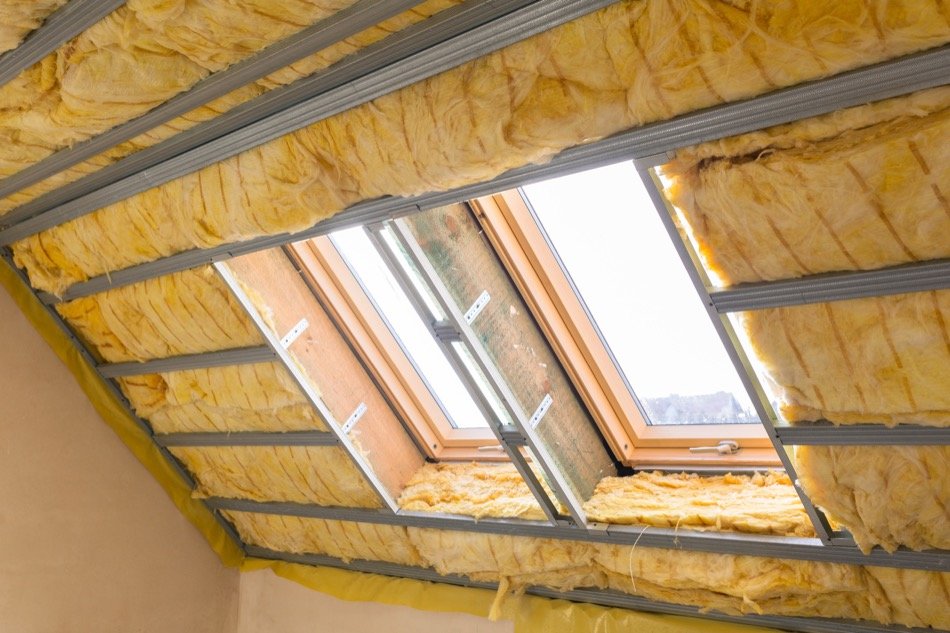Home Insulation Guide: Best Types of Insulation & R-Value For Your Home
Posted by Dave Kotler on Friday, December 2nd, 2022 at 9:10am.
 Are you considering installing insulation in your home? Insulation is an essential component if you're looking to increase your home's energy efficiency and lower your energy bills. The Canadian government and most home builders suggest that increasing or improving the insulation in attics, floors, and walls and reducing air leaks around the home can save up to 20% or more on home heating costs and cooling bills. In addition to cutting down energy costs, a well-insulated home will often sell for more money, making it one of the most popular home improvements.
Are you considering installing insulation in your home? Insulation is an essential component if you're looking to increase your home's energy efficiency and lower your energy bills. The Canadian government and most home builders suggest that increasing or improving the insulation in attics, floors, and walls and reducing air leaks around the home can save up to 20% or more on home heating costs and cooling bills. In addition to cutting down energy costs, a well-insulated home will often sell for more money, making it one of the most popular home improvements.
With a bit of math, homeowners can quickly learn how an insulation project can pay for itself. However, is insulation a project one can take on by themselves? How is the value of insulation measured, and what types work best for specific home areas? This guide will answer all the frequently asked questions about insulation so that you can make the best choice for your home.
Is Installing Insulation a DIY Project?
The North American Insulation Manufacturers Association says that installing insulation is a project that most homeowners can do on their own, depending on their physical condition and motivation. They also caution that some types of insulation may take specific equipment to install.
Blanket insulation is perhaps the easiest insulation to install, coming in batts and rolls. Proper tools and safety gear, including goggles and gloves, should be used when installing any insulation product.
How is Insulation Effectiveness Rated?
R-value rates insulation products. This number indicates how well a particular type of insulation resists airflow. The higher the R-value, the more resistance the product provides, meaning it is generally considered a better insulator. The recommended amount of R-value for homes depends on where the home is located.
What Are The Different Types of Insulation?
Different types of insulation can work better in certain areas of your home. Choosing the right type of insulation for each area will help improve performance while minimizing expenses.
- Blown-in or Loose-fill Insulation. This type is generally made of fibreglass insulation or recycled paper (cellulose). Blown-in insulation is often blown into existing walls or added to insulation already in an attic. Because it is loose material, it takes a specific machine to blow or spray it into a particular space. These machines are usually available a home improvement stores and tool rental stores.
- Batts and Rolled Insulation. These are pre-cut fibreglass strips that fit between studs in an open wall or attic. They can be relatively easy to cut with heavy scissors or a razor knife. Remember that fibreglass stands can irritate the skin and eyes so take precautions. This type of insulation is generally easy to work with and perfect for the do-it-yourself person looking to add insulation to an attic space.
- Foam Board Insulation. Foam board is a stiff insulating material usually made of polystyrene or polyurethane. It can be cut to size quickly and is versatile enough to be used to insulate foundations, basement walls, attics, and ceilings.
- Spray Foam Insulation. Polyurethane or latex foam is a perfect insulator for small spaces around windows, doors, and wall sockets. Spray it into an area, and it will expand and quickly dry. The foam can be trimmed after drying. It is not recommended to insulate larger spaces. Since it's water resistant, it's a great choice for bathroom renovations.
Other types of insulation include radiant and vapour barrier qualities that help keep a home more comfortable.
What Are the Other Benefits of Insulation?
Home insulation offers numerous advantages beyond saving money on energy bills. Depending on the type of insulation you install, it can also benefit your health. Many types of insulation contain microscopic fibres that act as natural filters to reduce airborne allergens and prevent mold growth. This creates a healthier home and improved air quality for everyone.
Plus, a proper layer of insulation can easily minimize sound from outside sources, making it much easier and more pleasant to relax in your own home. Investing in home insulation can offer countless benefits, from comfort to peace of mind.
Don't Forget Your Home's Insulation
These are just a few of the questions you should ask yourself before deciding whether to install insulation yourself or hire a professional. While installation is not typically a difficult task, there are some important factors to consider that could make your project go more smoothly. With so many different types and R-values of insulation on the market, it can be confusing to know which one is right for your home. But armed with a little knowledge about how insulation works and what your options are, you can make an informed decision that will save you money and help keep your home comfortable year-round.
Dave Kotler

